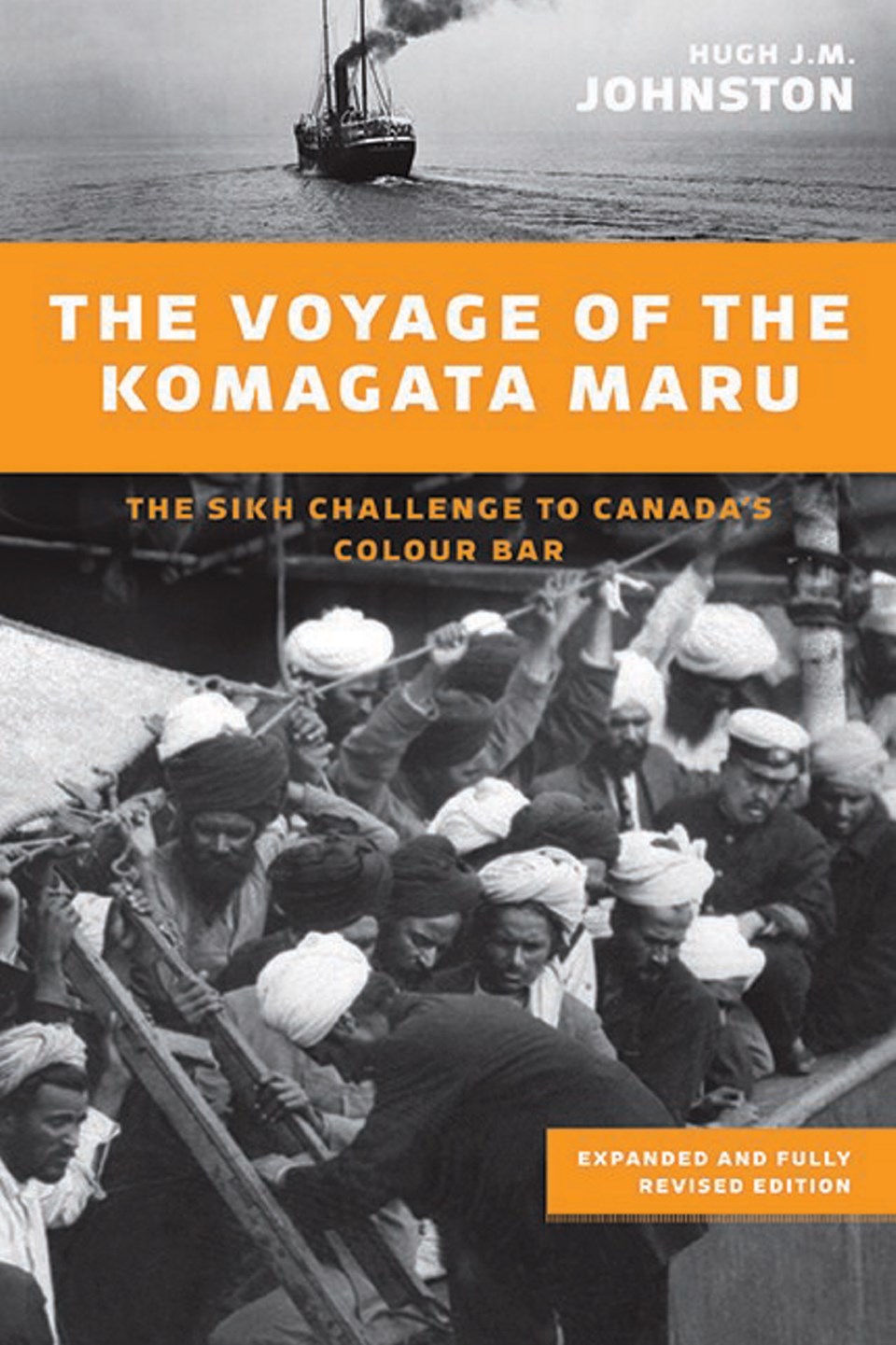The Voyage of the Komagata Maru: The Sikh Challenge to Canada’s Colour Bar
By Hugh J.M. Johnston
University of British Columbia Press
268 pages, $29.95
Timed to coincide with the 100th anniversary of the summer of the Komagata Maru, this expanded and revised edition of a 1989 book should force us to take another look at British Columbia’s racist past.
Our ancestors did not like Asians, and did everything they could to bar their entry. There is no better example of that than the Komagata Maru, the vessel chartered to challenge Canada’s immigration laws in 1914.
The ship was in Burrard Inlet for two months that summer, with most of its Punjabi passengers denied permission to land. While in Canadian waters, they were harassed by immigration officials and suffered due to a lack of food and water.
Hugh J.M. Johnston’s original book was the most comprehensive examination of what happened, and this book, the second revision, takes his original work much further. He places the Komagata Maru incident in the context of the racism here as well as the differing factions in the Punjabi community along the West Coast.
He also explores the bitterness felt in India, which was under the thumb of British rule at the time. British authorities were determined to stop any trouble before it started, and that resulted in a tough attitude that only made tensions worse.
The ship’s voyage resulted, directly or indirectly, in the deaths of at least two dozen people, with most of them killed in a clash with authorities on their return to India. An immigration inspector in Vancouver was also killed, felled by an assassin in the courthouse months after the Komagata Maru left Vancouver.
The story has strong connections to Victoria. The year before the ship arrived, in 1913, another vessel arrived here with potential immigrants from India. After the Panama Maru docked in Victoria, 38 of its 56 passengers were given the legal right to remain. All of the new arrivals spent time in the immigration building close to Ogden Point.
Their successful entry encouraged a larger contingent the next year — the 376 who arrived on the chartered Komagata Maru in May 1914.
The Komagata Maru cleared the William Head quarantine station, now the medium-security prison, before it carried on to Vancouver. Its departure two months later was ensured by the Esquimalt-based HMS Rainbow, the first Canadian navy vessel on the Pacific coast.
As is so often the case with books on history, maps would have helped, especially when the book is covering territory that is likely unfamiliar to most readers, such as the towns and cities in India where the ship’s passengers ended up.
A map might have helped the author as well — it’s frustrating to read an obvious error, such as Active Pass being placed in American waters. Johnston writes that, on the ship’s voyage to Vancouver, a Japanese crew member jumped overboard near an American island about 30 kilometres from Victoria, and later specifies Active Pass as the location of the incident.
In the first edition of the book, Johnston specified Plumper’s Passage as the location of the man overboard. That might have been a reference to Plumper Passage, the waters off Discovery Island. Unfortunately, that water is much less than 30 kilometres from Victoria, and is about as American as Active Pass.
At one time, Active Pass was known as Plumper Pass, which might be why the change was made for this edition. But that still doesn’t make it American.
In May 1914, the Daily Colonist and the Victoria Daily Times mentioned the jump in their coverage of the Komagata Maru. Both said it occurred at Turn Point, which is on Stuart Island in Washington state, just across the line from Moresby Island. That location makes sense.
Geographical errors don’t help, given that the story told in this book is complicated enough as it is. But they should not dissuade the reader. The story of the Komagata Maru is an important one and it needs to be remembered.
Hugh J.M. Johnston will speak about his book at the Greater Victoria Public Library’s World Refugee Day Celebration at 1 p.m. Saturday, June 21. The event will be at the central branch, at 735 Broughton St.
The reviewer is editor-in-chief of the Times Colonist.



